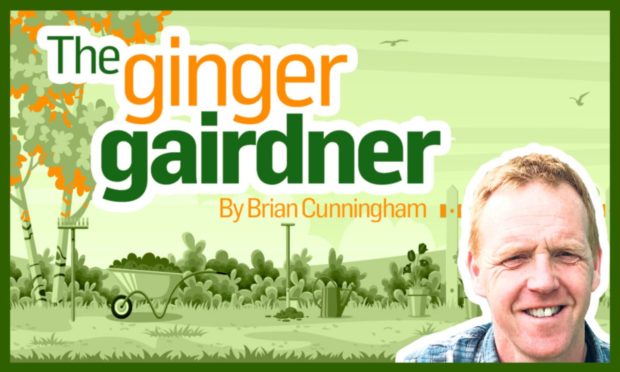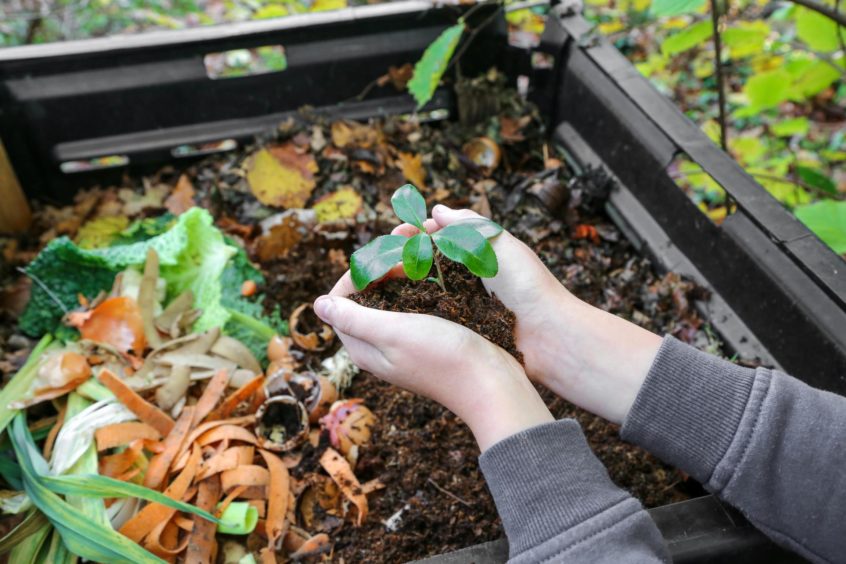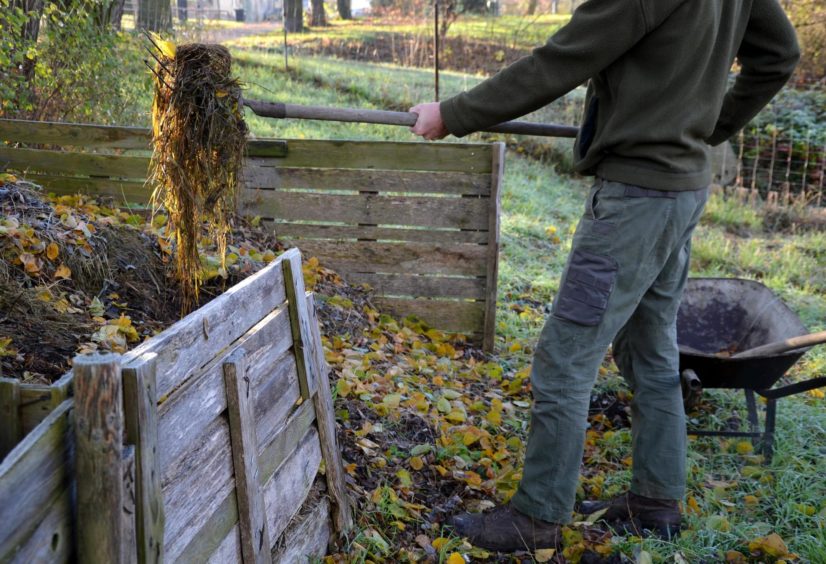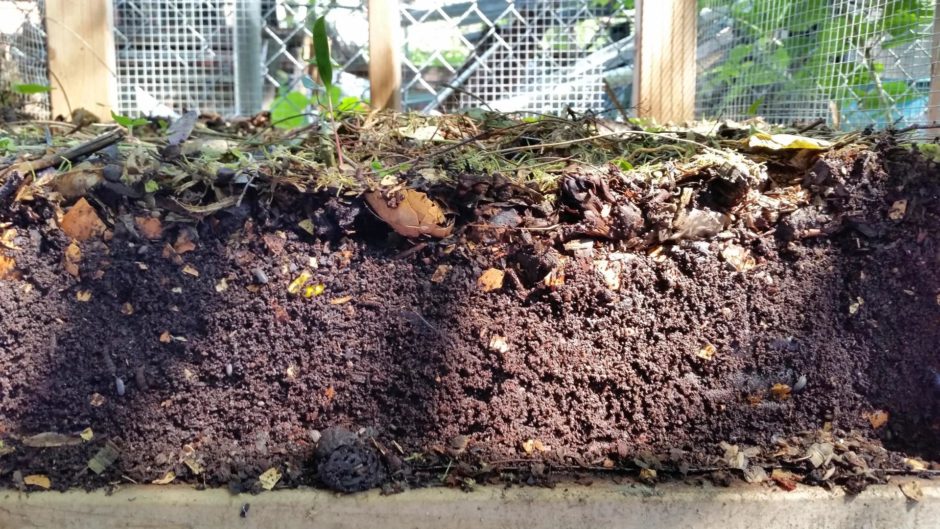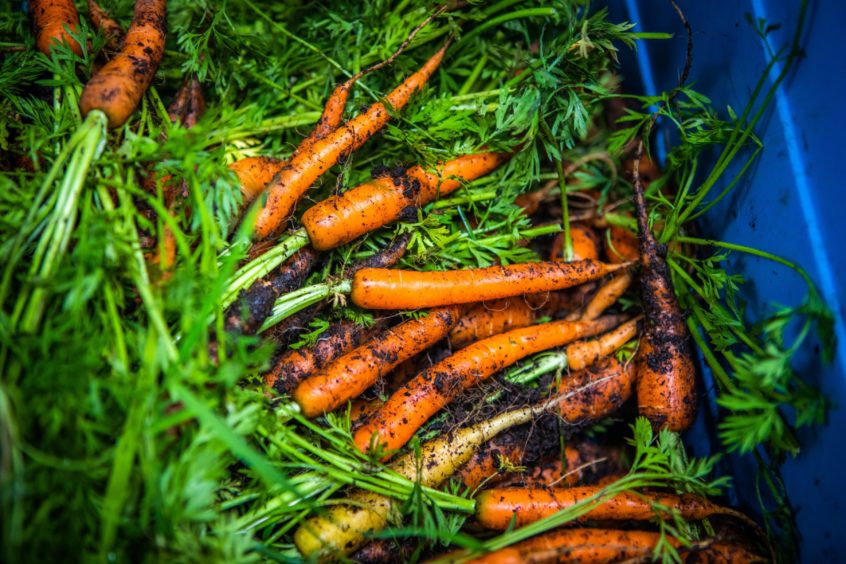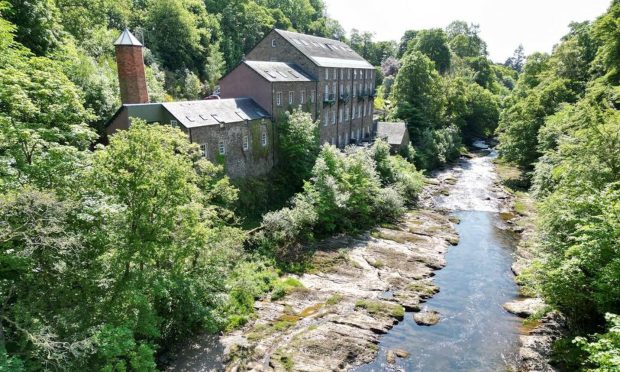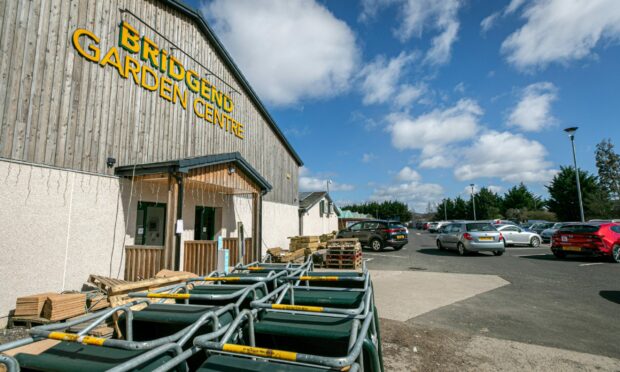One of the most satisfying things when creating my new no-dig veg plots at home, was using up my own compost created from my own garden and kitchen waste.
This only made up a small portion of the mix I needed to put together a sort of raised bed 15cm/ 6inches high, 1.2m/ 3.5ft wide and 4m/ 13 foot long, helping to make a concoction that also included leaf mould, soil, half empty bags of potting compost that has been sitting in my shed over winter and rather whiffy, yet full of goodness, farm yard manure.
But knowing I was also able to put back into the soil this decayed material that is a result from gathering in to a heap the likes of grass clippings, vegetable food scraps, leaves, last year’s summing bedding plants and the dead foliage of my herbaceous plants, was the most pleasing.
I’ve found out the hard way over the years that it can be quite challenging to create your own compost, never quite managing to get it looking as good as these gardeners off the tv. It’s taken me years of practise but I finally feel I am starting to get it right.
I use two systems in my garden at home. I am lucky to have a big enough garden that allows me two boxes made from five old pallets, this is the main engine room but I also supplement this with a Hotbin, an enclosed system that during the summer months heats up, converting the ingredients into compost much faster.
This is the method I shall be using over the growing season, needing the warmer temperatures to help generate the heat that only spring and summer will bring. I must admit in my enthusiasm I did try to start it off a few weeks ago when we had a nice wee warm spell, thinking that spring had come early but the colder, wintry weather that came next reminded me just to be patient that wee bit longer.
You may be familiar with the saying, “all the gear, but no idea” and it couldn’t be truer in this case as no matter if you pay for a compost maker or build your own at home to produce your homemade compost, it’s all about the material that goes into your heap and, more specifically, the amounts.
Anything that is suitable for the compost is divided into two groups- greens and browns. The former can be grass clippings, vegetable peelings from the kitchen and their foliage from the plot plus cut flowers after your indoor decorations are over.
The latter are the likes of shredded pruning and hedge clippings, wood chip, straw and leaves. Softer cardboard, such as egg boxes or the inners from kitchen and toilet rolls torn up and thrown in the compost, are perfect for soaking up any excess moisture your heap may have. We’ve all got plenty from all the toilet roll being hoarded during the lockdowns!
The key is the amount of each group that we add in, our heap needing to have slightly more from the brown camp with roughly up to a quarter to half of greens. Getting this combination correct is the key to ensuring the bacteria and micro-organisms that produce the compost are working at their best.
I think the classic mistake that all of us gardeners have made at some point is having too many grass clippings from the green camp turning our heap into a wet and slimy, stinking mess. And that’s the challenge we all face as everything usually comes in a glut at once giving us too much of the one thing. If possible and you have the space it’s handy to have a few separate piles.
It’s good to mix it together
When this happens and our combination is not quite right it’s good to mix it all together either turning it with the fork or if you have one of those fancy tumbler compost bins, giving it a spin. Turning your heap adds air which is also essential for composting to occur.
This is where me having two pallet bins comes in very handy as at the moment one is full of the garden waste I have accumulated over the winter and now that the second bin is empty, once a month I can move the contents from one to another mixing it all together and adding air in the process.
The site must be right
The siting of your composting factory is important too. Although this is something we like to hide away the ideal spot is somewhere where temperatures and moisture levels remain fairly constant but I do like my hot bin to get as much sun as it can to help build up the heat required for the composting process to happen.
My open compost bins are placed on soil which helps with drainage and allows access to all the good guys in the earth which benefits the whole composting process.
It’s not a problem if you do wish to compost on a hard surface just start off by placing a layer of earth on the surface.
